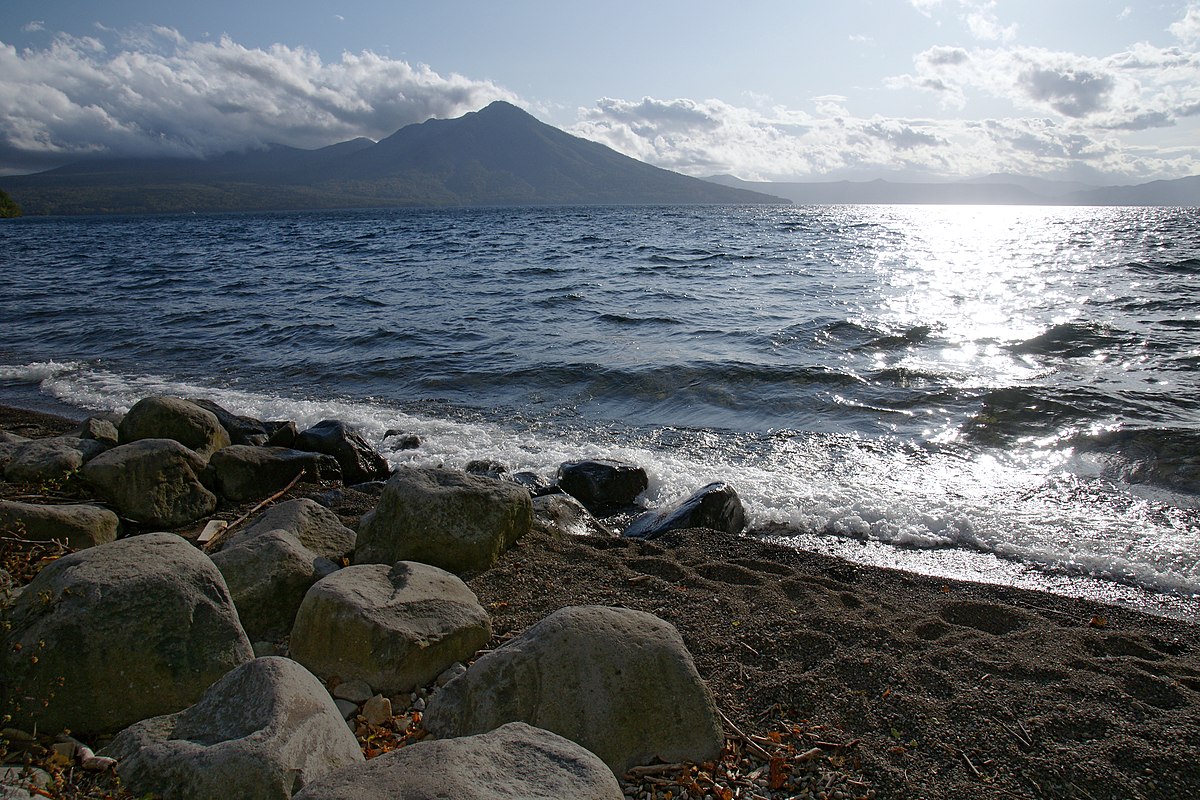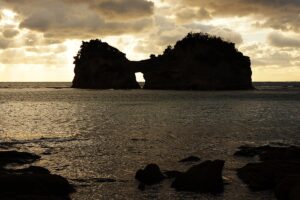TOC
Overview (history, characteristics, attractions)
Lake Shikotsu is a caldera lake in Chitose City, Hokkaido, located within Shikotsu-Toya National Park. Formed by volcanic activity, it boasts a maximum depth of approximately 363m, making it one of the deepest lakes in Japan, and is known for its crystal clear waters. The lake is resistant to freezing throughout the year, and is known for not completely freezing over even in winter. Surrounding it are towering mountains formed by volcanic eruptions (such as Mount Eniwa, Mount Tarumae, and Mount Fuppushi), and the lake offers beautiful scenery in all four seasons, making it a popular destination for sightseeing, outdoor activities, and hot springs.
Highlights
- Lakeside scenery: The scenery created by the crystal clear water and the surrounding mountains is photogenic. The lake surface is especially beautiful in the early morning and at dusk.
- Sightseeing boats and cruises: Sightseeing boats are operated that allow you to view the scenery of Lake Shikotsu and the strange rock formations on the shore from the lake. You can easily enjoy seasonal views.
- Canoeing/Kayaking: Canoeing on the calm waters of the lake is popular, and guided tours are available for beginners.
- Hiking/Mountain climbing: The trailheads for Mt. Eniwa, Mt. Fuppushi, and Mt. Tarumae are nearby, and the hiking trails offer spectacular views overlooking the lake (there are trails for intermediate to advanced hikers).
- Hot Springs: There are historical hot springs such as Marukoma Onsen on the lakeside. There are also facilities where you can enjoy an open-air bath overlooking the lake.
- Seasonal events: Highlights include the winter Ice Festival (ice sculptures and illuminations) and the colorful autumn leaves.
- Nature observation: You can observe wild birds, alpine plants, and fish (trout) that live in the clear water.
Access (nearest station, transportation, etc.)
- Nearest train station: JR Chitose Station (there is no train directly connected to Lake Shikotsu). From Chitose Station, you can access the lake by car or local bus.
- From the airport: It's about a 20-30 minute drive from New Chitose Airport. It's easily accessible and makes a great starting point for sightseeing.
- From Sapporo: Approximately 1 hour to 1 hour 30 minutes by car (depending on distance and road conditions). The most common public transportation is by bus via Chitose.
- Bus: Buses run from Chitose Station and New Chitose Airport to Shikotsuko Onsen and other destinations (the number of buses varies depending on the season and day of the week, so it is recommended to check the timetable in advance).
- Private car/rental car: There are parking lots and observation spaces on the lakeside, making it easy to get around, but they may be full during peak seasons.
Estimated stay (estimated time required)
- Short-term sightseeing: A stroll along the lake and taking photos at the observation deck will take about 1-2 hours.
- Day trips to enjoy activities: Combining a sightseeing boat with canoeing or a short hike will take you half a day to a full day (3-6 hours).
- Relaxed stay: If you plan to stay overnight at a hot spring, take your time hiking, and sightsee in the surrounding area, one to two nights is recommended.
Nearby spots
- Marukoma Onsen: A long-standing hot spring on the lakeside. The appeal is the open-air bath where you can enjoy a view of the lake.
- Poropinai (lakeside park and campground): An area perfect for nature experiences and walks, where you can enjoy camping and picnics.
- Lake Shikotsu Visitor Center (regional information center): Helps you understand the surrounding area with information on nature and mountain climbing, as well as exhibits.
- Facilities within Chitose City: Chitose Salmon Hometown Museum (Salmon Park) and tourist facilities and shopping at New Chitose Airport are also within easy reach.
- Trailheads for Mt. Tarumae, Mt. Eniwa, etc.: These are the bases for planning mountain climbing or trekking.
Things to be aware of (crowds, manners, seasonal precautions, etc.)
- Traffic and Crowds: Parking lots and surrounding roads can be congested during summer holidays, autumn foliage season, and winter events. Consider using public transportation or leaving early.
- Weather changes: As this is a mountainous region, the weather can change suddenly, and there may be days with strong winds or poor visibility. Please bring warm clothing and rain gear.
- Water temperature and safety: The lake water is deep and cold, so swimming is dangerous for amateurs. Always wear a life jacket when using a sightseeing boat or canoe.
- Preparation for climbing: Some of the surrounding mountains have difficult climbing routes. Prepare a map, equipment, and an action plan, and take into account sunset and weather conditions.
- Protect the natural environment: Please take your trash with you and refrain from touching plants and animals. Fishing and collecting may require rules and permission.
- Winter warning: Although the lake does not freeze over easily, it is still very dangerous to go out on the ice. When participating in winter activities or events, please follow the organizers' instructions and take safety precautions.
- Check the information: Bus schedules, frequency, and operation of sightseeing boats and facilities change depending on the season, so please check the official website or local information for the latest information before visiting.



